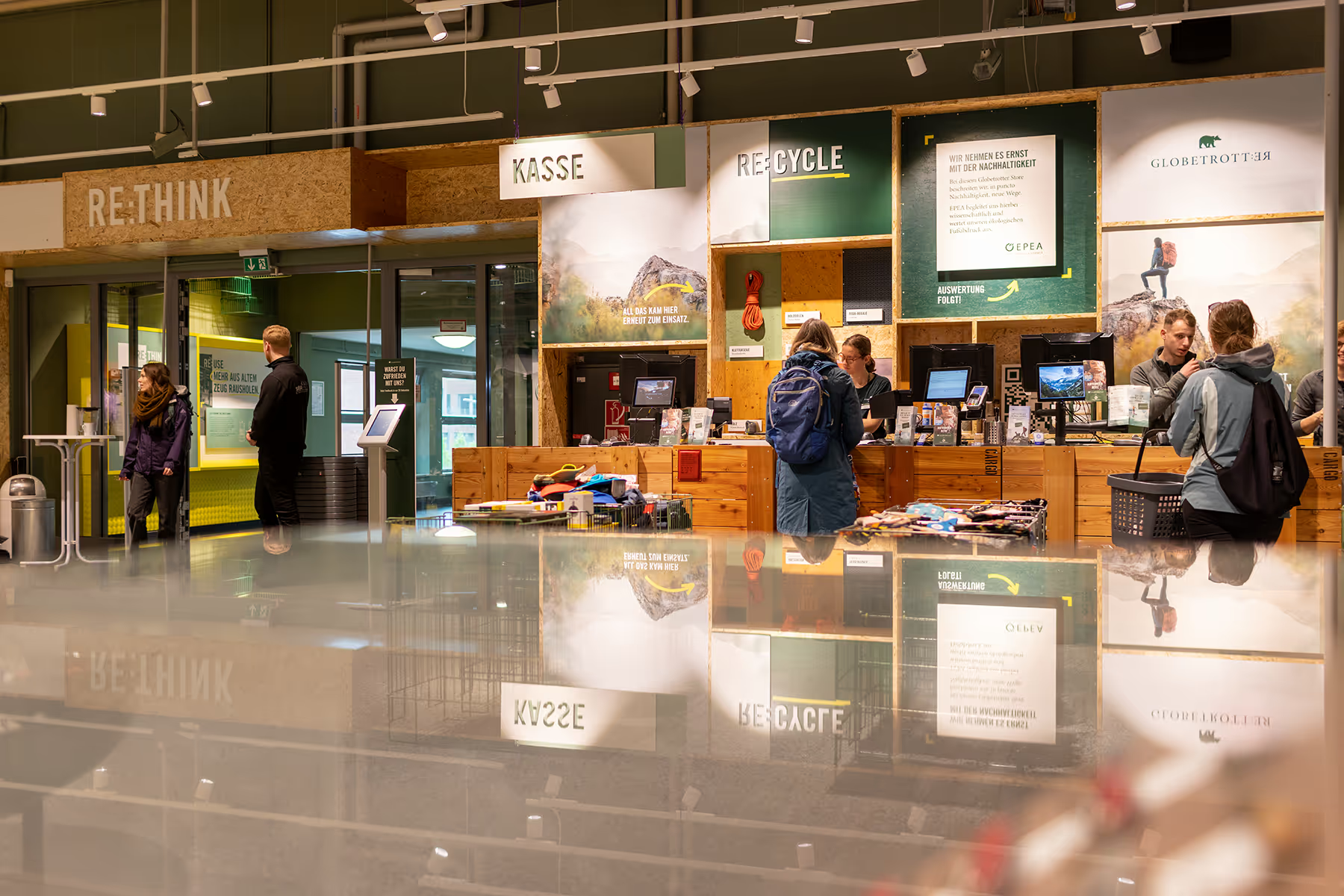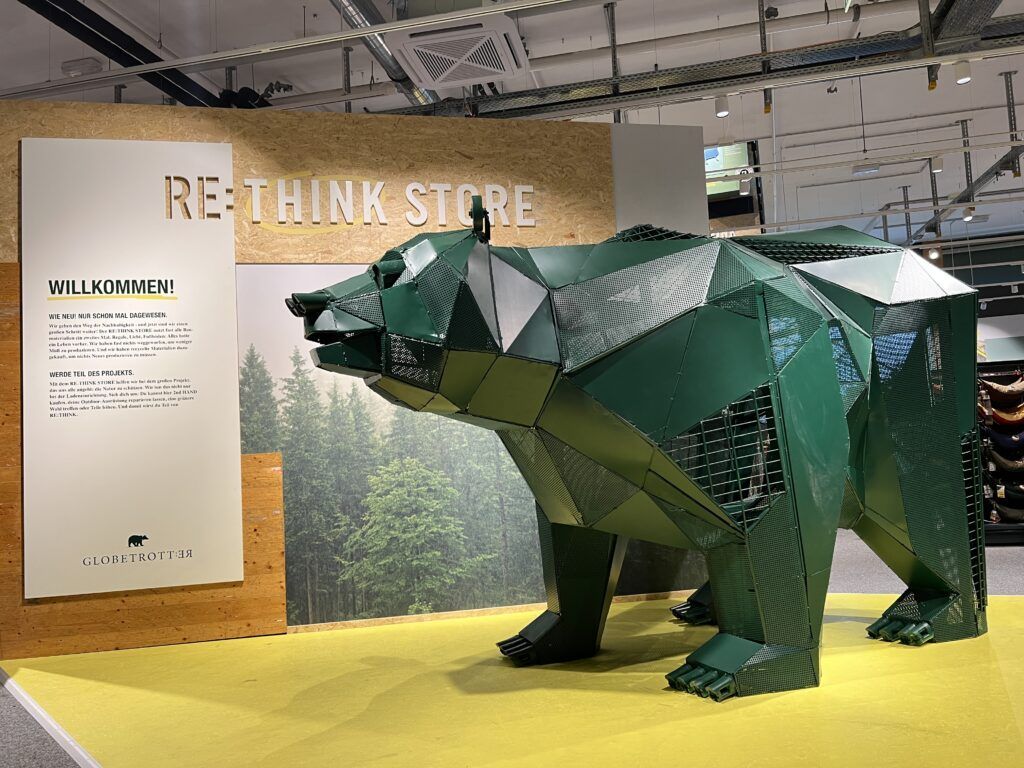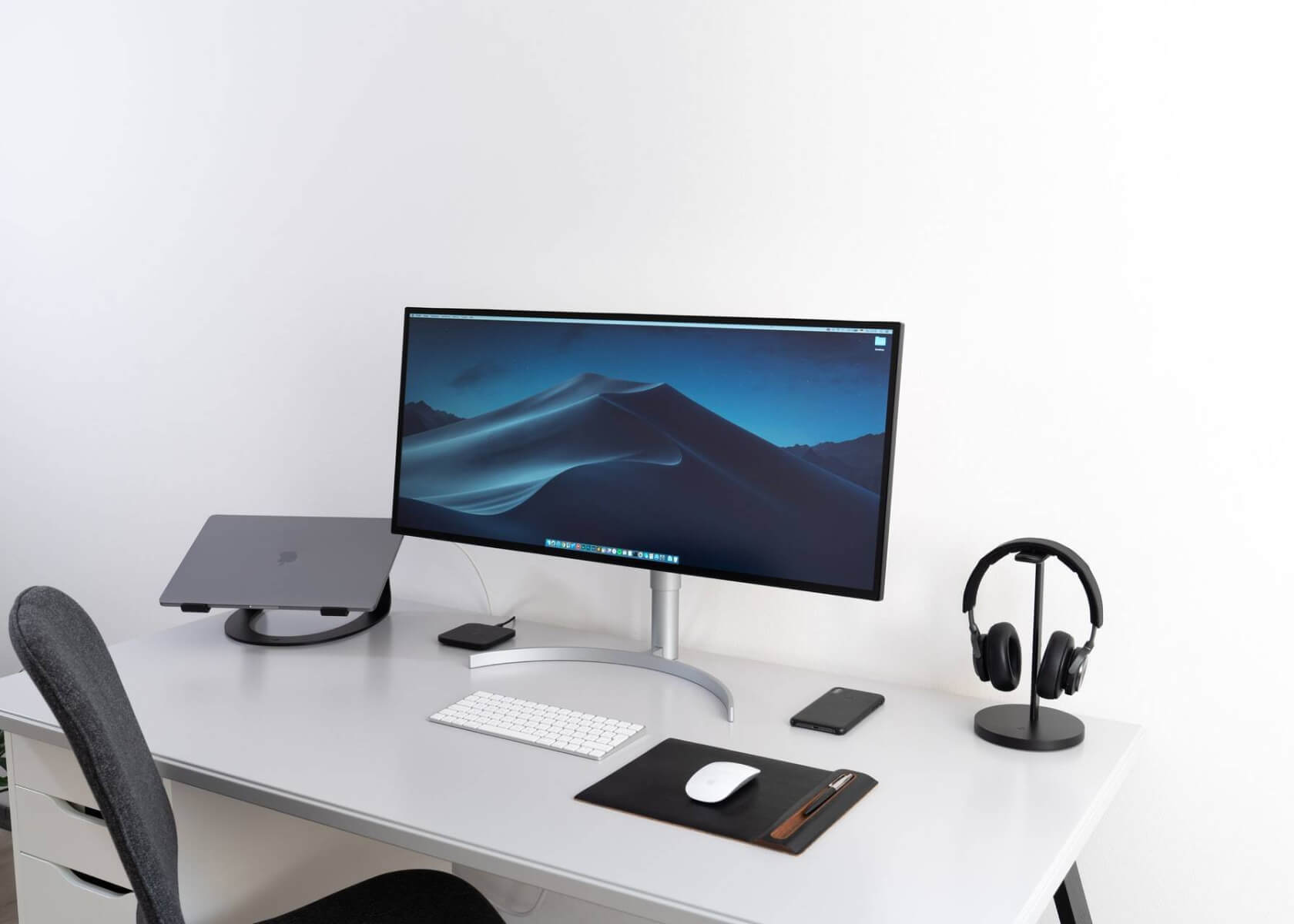
builder: Globetrotter GmbH
finishing: 2023
Interior concept: Dan Pearlman
Shopfitter: loom shopexpansion GmbH
The Re:Think Store by Globetrotter in Bonn, opened in May 2023, is a pioneering example of circular economy in retail. For this innovative project, a large part of the previous tenant's furniture was used Conrad Electronic acquired and redesigned in such a way that a sustainable shopping experience in the outdoor segment could be created.
The furniture was supplemented by furniture from other globetrotter branches — with the clear aim of avoiding the use of new products as far as possible.
The store also offers a variety of sustainable services: an in-house repair shop, second-hand buying and selling, and outdoor equipment rental. These offers promote the reuse and repair of products — and enable customers to consume more consciously and in a more resource-friendly way.
As part of this project, EPEA developed the Circularity Passport® - Interiors in order to compare and optimize various interior design approaches with regard to their environmental footprint and the materials used during conception. After implementation, the ideas and interior design qualities carried out are evaluated and documented with the Circularity Passport® and thus allow comparisons and consistent improvement.
“It was important to us to improve sustainability performance, such as saving materials and CO2e, which arise from the re-think approach. For this purpose, the entire branch setup was scientifically supported by circular economy experts, the EPEA — part of Drees & Sommer.
The detailed evaluation within Circularity Passport® has encouraged us to continue the Re:Think approach and at the same time has also shown us potential for optimization for future projects.”
Fabian Nandza, Senior Sustainability Manager at Fenix Outdoor/Globetrotter

Cover photo: ©Thomas Schwörer
